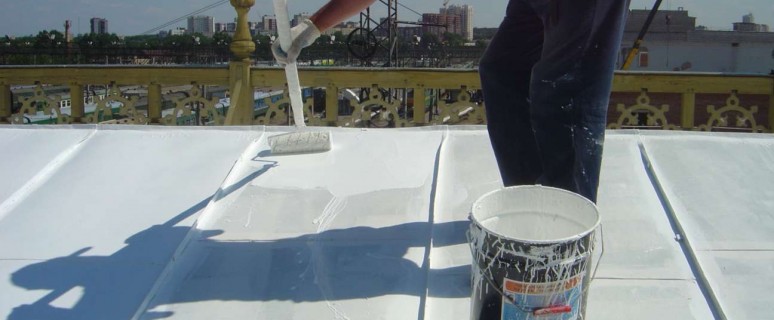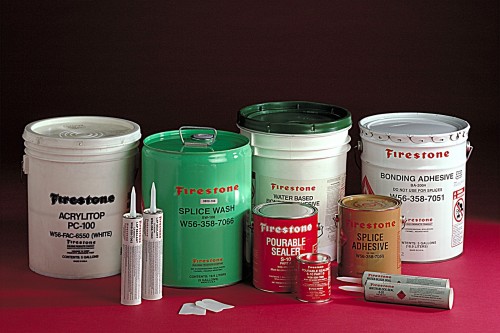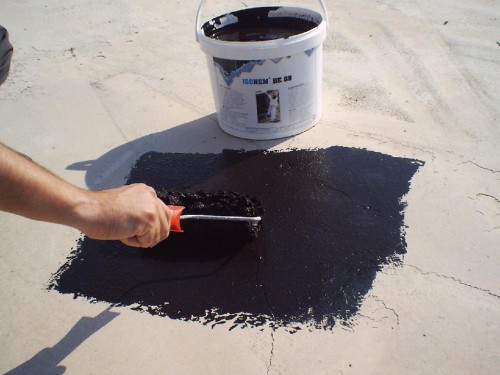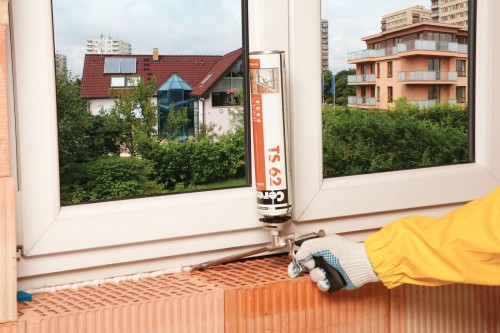
Polyurethane sealant: properties and scope Building materials

Civil and industrial construction today is experiencing an unprecedented growth. Significant changes were embryed not only in the technology of construction and operation of buildings, but also the decoration of the premises. Polymeric materials perfectly arrived in the construction sector, allowing you to optimize many processes. Construction sealants have become an personification of progress.
Content
Characteristics of sealants
Construction sealants are customary to classify by several types:
- bituminous;
- polyurethane;
- silicone;
- acrylic;
- tyokolov et al.
Moreover, each type has a certain scope. For example, the facade seams are not compacted by acrylic compositions characterized by a non-fatty effect.
To successfully close cracks, carry out full sealing, it is necessary to choose the appropriate product, taking into account the source features:
- surface type;
- place (outside or indoors);
- surface mobility;
- temperature regime;
- humidity level;
- the use of paints and varnishes.
The sealant should be elastic and firmly to keep the seam with any external influences. We highlight the features of the most sought-after product types:
1. Silicone sealants. The substance does not accept staining, unlike an acrylic counterpart. Therefore, the product is available in a wide range of color. The advantages of the choice are:
- resistance to temperature drops;
- moisture resistance;
- universality (neutral and acetic silicone sealants are applied to metal, wood, ceramics and plastic).
2. Acrylic sealants. An acrylate based substance is elastic, steadily for deformation. For finishing internal premises, acrylic sealants look most attractive. Spectrum of application:
- installation of window frames;
- installation of plinths;
- installation of door frames;
- repair of furniture.
The disadvantage of acrylate-based funds is a tendency to destruction under the influence of humidity. However, manufacturers offer waterproof compositions that are withstanding and high humidity, and negative temperature.
3. Facade sealants. The best material for joints and seams are sealants on a polyurethane basis. Polyurethane is elastic, resistant to deformations, external factors. But for facade works of a wooden log, it is advisable to choose the appropriate sealant. When shrinking, the substance will stretch, narrow and does not lose contact with a wooden base.
4. Polyurethane sealants. The most reliable among all types of sealants. Tools have high elasticity, damage resistant. Polyurethane sealants are used mainly for outdoor work. This is a seal of joints of bearing structures, facade works and sealing of a roof, foundation. An important feature of the product is resistance to weather changes and the possibility of staining.
Properties and characteristics of polyurethane sealant
Polyurethane-based sealants are distinguished by durability and resistance to various manifestations of an aggressive external environment, mechanical effects and temperature differences. The product perfectly manifests itself under water, which allows to expand the range of material. But the most importantly, polyurethane sealing compositions are easy to operate. When using cartridges, it is enough to screw the tip, cut off according to the desired diameter and paste into the standard gun.
The material has a good clutch with brick, natural stone, wood and concrete. After filling the cavity, a neat rubber-like seam is formed, which demonstrates high resistance to deformations and an aggressive external environment. What is curious, the material demonstrates the grip with a 100% surface, regardless of the texture. The techniques are also allowed after drying.
Polyurethane sealant is allocated among peers economy. One package is enough for processing solid areas. Suppose you want to fill the adhesive seam length of 11 m, depth of 5 mm, 10 mm wide. Leaves about 0.5 liter or 2 liter cartridge of 0.3.
Excellent adhesion is shown to other sealants. This means that in case of damage of sealing can repair the defective part. And notice this will be difficult. For example: silicone with respect to the silicone adhesive does not, therefore, reduced repair times to a complete dismantling of the joint.
So we generalize the properties of the polyurethane sealant:
- durability;
- resistance to external characteristics (humidity, ultraviolet light, temperature extremes);
- efficiency;
- simple operation;
- excellent adhesion to the previously coated layers of the sealant;
- excellent adhesion to concrete, wood, stone and brick;
- possibility of applying material in paint formulations;
- elasticity;
- high frost resistance (resistant to -60 ° C);
- zero shrinkage;
- environmental friendliness;
- polymerization under the effect of moisture.
In addition, the type of polyurethane sealant is:
- one component;
- two-component.
One-component adhesive consists of a polyester-compounds and hardeners substances. The adhesive mass hardens by contact with air or bonding material. In some cases, this type of adhesive requires additional moisture prior to application. For this purpose the surface is sprayed with water.
Curing time is 60 minutes, which is what sets the glue among peers. Unlike the two-component polyurethane sealant, this product has a more attractive price tag and a long drying time. With regard to the complete solidification, both adhesives exhibit approximately the same result - 2 days.
Two-component adhesive also comprises a polyester-compounds and hardeners substances but significant contrast compositions. In this case, polyesters and hardeners are mixed before use. Due to this setting time is reduced to half. This product is operated by professionals in an industrial scale.
The advantages of two-component adhesives include improved moisture resistance and adhesion, so the products are used for bonding glass or metal sheets.
How to use a polyurethane sealant?
Both black and white glue consists of solid synthetic resins. For comparison: white and yellow glue plows are 50% composed of resins, and half complements water. Due to high adhesion, the sealant creates a reliable adhesion of any of the surface to metal, glass, wood and even plastic. What you need to know before applying polyurethane sealant?
1. Security.
The adhesive contains many harmful components that may fall into the body as a result of evaporation or direct contact. As a result, it should protect themselves with the relevant working conditions, namely:
- put on gloves and glasses;
- if necessary, put the respirator;
- open windows for high-quality ventilation.
2. Humidity.
Polyurethane sealant is used for gluing glass, concrete and other surfaces. However, the conditions of operation in all cases are individual. Thus, the coating moisture should be 8-9%. Otherwise, it should be slightly moistened to the surface for durable adhesion.
3. Breaking savings.
Unlike analogues, for seams of polyurethane sealant is required significantly less.
4. The ability to adjust the composition for 20 minutes.
The glue freezes for half an hour. During the first 20 minutes it is necessary to align all parts. To glue the design from a variety of details, this is an indisputable plus.
5. Removing dried pieces of foam. Hyd, material expands. As a result, the surplus is made in the form of foam. It is necessary to wait for the final solidification and gently cut out the extra mass of the furniture knife.
6. Long shelf life. In the closed form, the material is perfectly stored for 3 years. After printing, the package should use the whole composition within 6 months.
There are three gluing technologies, with which it is easy to secure any parts.
1. Cold way.
- thin layer of glue is applied to two glued clean surfaces;
- withstands 10 minutes;
- another layer is applied;
- both parts are pressed (squeezing lasts about 2 minutes).
2. Hot way.
- the glue is applied into two surfaces;
- waiting for 30 minutes;
- the surfaces are warmed up to a temperature of + 80 ° C;
- both parts are pressed under the press.
3. Wet method.
- both parts are covered with glue;
- surfaces are sprayed with water;
- details are pressed by pressing.
Master at a notic
- Polyurethane sealant for wood will demonstrate better adhesion at moisturizing wood. It is necessary to lose weight on the surface and wait for a few minutes so that the excess moisture evaporates.
- The tool makes great fills the gaps, however, with poorly fitted parts, the design does not become stronger. Must be sure to make sure that all connected parts are tightly pressed.
- Finally, for storage, you can make a simple stand of two parts of the board. Drill the recess in the middle for the lid and the nose hole. So actually extend the shelf life of glue for several months.
Scope of polyurethane sealant
Depending on the glue brand, you can judge the scope. Thus, for static structural elements, non-shy adhesives are used. For unstable structures use polymer sealants.
Polyurethane sealants of white and gray colors have a homogeneous resin consistency. Polymerization passes due to contact with moisture contained in a small amount in the air.
Due to efficiency, polyurethane sealants are used to glue concrete, glass, other materials. Which reduces the cost of some technological processes on an industrial scale. Products find use:
- in the production of commercial equipment;
- during repair and finishing work;
- in mechanical engineering to glue individual elements;
- in the process of manufacturing sandwich panels from plastic, metal;
- in the production of metal-plastic and wooden windows for connecting the angular parts;
- to counteract corrosion;
- for insulation of metal pipes.
In addition, for the roof, polyurethane sealant is also successfully applied. With the help of the composition, sealing and gluing individual parts are carried out. And the masonry use universal glue for laying ceramic tiles. The substance allows you to secure the tile on any base:
- brickwork;
- concrete;
- plasterboard;
- metal;
- wooden floor and others.
Disadvantages of polyurethane sealant
And gray, and white adhesive compositions do not withstand the effects of excessively high temperatures. At + 120 ° C, adhesion loses its properties. It is not recommended to apply material to the surface whose humidity exceeds 10%.
In addition, the adhesion of sealant to some types of plastic is not solid enough that sometimes leads to undesirable effects. Therefore, we strongly ask to carefully study the instructions before buying.
Well, finally, the utilization of polymers is a pretty expensive process and difficult if you are fighting for the purity of the environment.






















